D-link DKVM-IP8 User Manual [ru]
D-Link DKVM-IP8
8 Port KVM Switch
Over IP
V1.1
2013.4.10
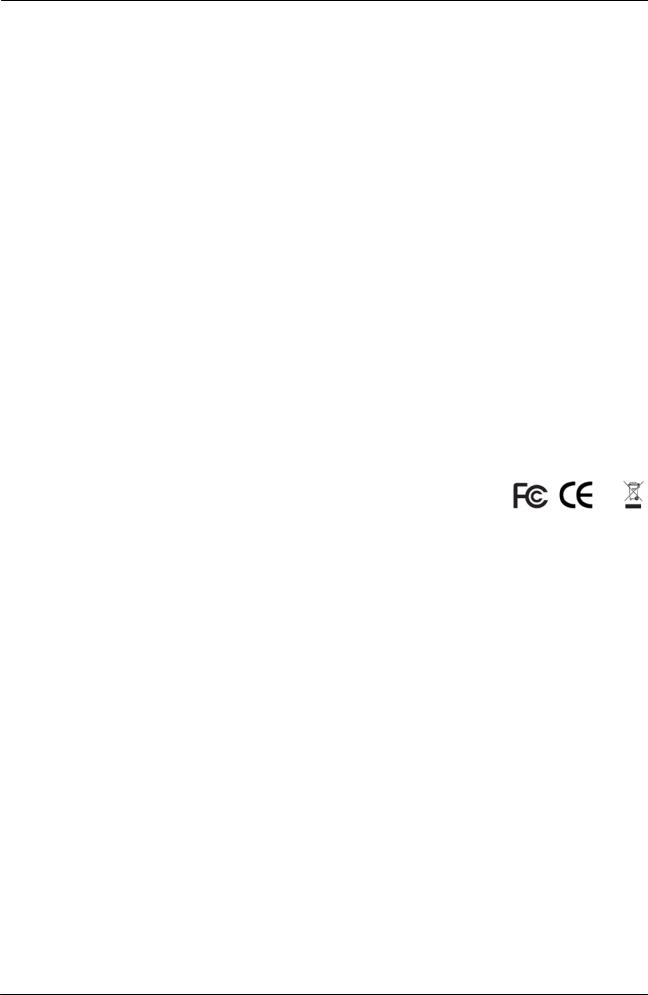
DKVM-IP8 User Manual
Certificates
FCC
This equipment has been tested and found to comply with the limits for a Class A digital device, pursuant to Part 15 of the FCC. Operation is subject to the following two conditions:
(1)This device may not cause harmful interference
(2)This device must accept any interference received, including interference that may cause undesired operation.
RoHS
All contents of this package, including products, packing materials and documentation comply with RoHS.
2 / 104

DKVM-IP8 User Manual
|
TABLE OF CONTENTS |
|
1. The quick installation guide.............................................................................................. |
6 |
|
1.1 |
Installation............................................................................................................... |
6 |
1.2 |
Initial IP configuration ............................................................................................. |
7 |
2. Introduction .................................................................................................................... |
12 |
|
2.1 |
Feature overview .................................................................................................. |
12 |
2.3 |
System requirement.............................................................................................. |
14 |
2.4 |
When the server is up and running....................................................................... |
14 |
2.5 |
When the server is dead....................................................................................... |
14 |
3. Hardware installation ..................................................................................................... |
16 |
|
3.1 |
Installation............................................................................................................. |
16 |
3.2 |
Operations ............................................................................................................ |
17 |
3.3 |
Hotkey Commands ............................................................................................... |
18 |
3.4 |
OSD Operations ................................................................................................... |
19 |
|
3.4.1 Login Windows ........................................................................................... |
21 |
|
3.4.2 Port Name .................................................................................................. |
22 |
|
3.4.3 Main Menu.................................................................................................. |
23 |
|
3.4.4 Language.................................................................................................... |
23 |
|
3.4.5 Port Name Edit ........................................................................................... |
24 |
|
3.4.6 Port Search................................................................................................. |
24 |
|
3.4.7 User Security .............................................................................................. |
25 |
|
3.4.8 Access List.................................................................................................. |
26 |
|
3.4.9 Hotkey ........................................................................................................ |
26 |
|
3.4.10 Time Settings............................................................................................ |
27 |
|
3.4.11 OSD Mouse .............................................................................................. |
27 |
3.5 |
Firmware upgrade................................................................................................. |
28 |
4. IP module Configuration ................................................................................................ |
30 |
|
4.1 |
Initial Configuration............................................................................................... |
30 |
|
4.1.1 Initial configuration via serial console ......................................................... |
32 |
4.2 |
Keyboard, Mouse, and Video configuration .......................................................... |
33 |
|
4.2.1 DKVM-IP8 keyboard settings...................................................................... |
33 |
|
4.2.2 Remote Mouse Settings ............................................................................. |
33 |
|
4.2.3 Automatic mouse speed and mouse synchronization................................. |
34 |
|
4.2.4 Host system mouse settings....................................................................... |
34 |
|
4.2.5 Single and Double Mouse Mode................................................................. |
35 |
|
4.2.6 Recommended Mouse Settings.................................................................. |
35 |
|
4.2.7 Video Modes............................................................................................... |
35 |
5. Usage ............................................................................................................................ |
36 |
|
5.1 |
Prerequisites......................................................................................................... |
36 |
5.2 |
Login into the DKVM-IP8 and logout..................................................................... |
37 |
|
5.2.1 Login into the DKVM-IP8 ............................................................................ |
37 |
3 / 104

|
DKVM-IP8 User Manual |
5.2.2 Logout from the DKVM-IP8......................................................................... |
39 |
5.3 The Remote Console............................................................................................ |
39 |
5.4 Main Window ........................................................................................................ |
40 |
5.4.1 Remote Console Control Bar...................................................................... |
41 |
5.4.2 Remote Console Status Line ...................................................................... |
49 |
6. Menu Options ................................................................................................................ |
50 |
6.1 Remote Control..................................................................................................... |
50 |
6.1.1 KVM Console.............................................................................................. |
50 |
6.1.2 Telnet Console ............................................................................................ |
50 |
6.2 Remote Power...................................................................................................... |
51 |
6.3 Mapping................................................................................................................ |
52 |
6.3.1 Floppy Disk................................................................................................. |
52 |
6.3.2 CD–ROM Image ......................................................................................... |
53 |
6.3.3 Drive redirection ......................................................................................... |
58 |
6.3.3.1 Driver Redirection Utility Installation................................................. |
59 |
6.3.3.2 Built-in Java Drive Redirection ......................................................... |
63 |
6.3.4 Options ....................................................................................................... |
65 |
6.4 User Management ................................................................................................ |
66 |
6.4.1 Change Password ...................................................................................... |
66 |
6.4.2 Users and Groups ...................................................................................... |
66 |
6.5 KVM Settings........................................................................................................ |
68 |
6.5.1 User Console.............................................................................................. |
68 |
6.5.2 Keyboard/Mouse ........................................................................................ |
71 |
6.5.3 Video .......................................................................................................... |
73 |
6.6 Device Settings..................................................................................................... |
74 |
6.6.1 Network ...................................................................................................... |
74 |
6.6.2 Dynamic DNS ............................................................................................. |
77 |
6.6.3 Security....................................................................................................... |
79 |
6.6.4 Certificate ................................................................................................... |
82 |
6.6.5 Authentication ............................................................................................. |
85 |
6.6.6 Serial Port................................................................................................... |
86 |
6.6.7 Date / Time ................................................................................................. |
88 |
6.6.8 Event Log ................................................................................................... |
89 |
6.7 Tools ..................................................................................................................... |
92 |
6.7.1 Device Information...................................................................................... |
92 |
6.7.2 Even log...................................................................................................... |
93 |
6.7.3 Update Firmware ........................................................................................ |
94 |
6.7.4 Unit Reset................................................................................................... |
95 |
7. Troubleshooting ............................................................................................................. |
96 |
8. FAQs.............................................................................................................................. |
97 |
9. Addendum...................................................................................................................... |
99 |
A. Key Codes.............................................................................................................. |
99 |
B. Video Modes ........................................................................................................ |
101 |
C. User Role Permissions......................................................................................... |
102 |
4 / 104

|
DKVM-IP8 User Manual |
D. DKVM-IP8 port table ............................................................................................ |
102 |
E. Bandwidth Consumption ...................................................................................... |
103 |
F. Cable diagrams..................................................................................................... |
104 |
5 / 104

DKVM-IP8 User Manual
1. The quick installation guide
The DKVM-IP8 redirects local keyboard, mouse and video data to a remote administration console. It allows you to control one or many computers locally at the server site or remotely via the Internet using a standard browser. You can securely gain BIOS level access to systems for maintenance, support, or failure recovery over the Internet. Communication is secure via SSL encryption. Use in conjunction with a KVM switch for multiple-server access.
1.1 Installation
DKVM-IP8 switch redirects local keyboard, mouse and video data to a remote administration console.
All data is transmitted via IP. DKVM-IP8 switch can be used in a multi administrator and multi server environment as well. Besides, DKVM-IP8 switch is a KVM switch, which can also be used with a local console.
DKVM-IP8 switch hardware installation
Figure 1-1 The connectors of 8 port DKVM-IP8 switch front and rear side
Please perform the following steps:
1.(Optional) Connect the type A connector of USB A - Mini USB 5P cable to the host computer, while
using remote mass storage control.
2.Connect Ethernet to LAN port and/or modem to serial port, depending on how you want to access DKVM-IP8 switch
3.Power down your computer and DKVM-IP8 switch
4.Connect the power supply to DKVM-IP8 switch
5.Connect the monitor to the DKVM-IP8 switch console side.
6.Connect the keyboard to the DKVM-IP8 switch console side.
7.Connect the mouse to the DKVM-IP8 switch console side.
8.Connect a VGA cable (15-pin HDDB Male / Male) with the Male side to both of the host computer/KVM and the host port of the DKVM-IP8 switch.
9.Connect one purple end of 3-in-1 cable to the PS/2 mouse port on the host computer/KVM, and the other end of 3-in-1 cable to the host PS/2 mouse port on the DKVM-IP8 Switch.
6 / 104

DKVM-IP8 User Manual
10.Connect one green end of 3-in-1 cable to PS/2 keyboard port on the host computer/KVM, and the other end of 3-in-1 cable to the host PS/2 keyboard port on the DKVM-IP8 switch.
11.(Optional) Connect the type A connector of USB A - mini USB 5P cable to the host computer,
while using remote mass storage control.
12.Connect Ethernet to LAN port and/or modem to serial port, depending on how you want to access DKVM-IP8 switch
13.Power on the computer.
1.2 Initial IP configuration
In factory default, DHCP mode is disabled (IP auto configuration = None), and the IP settings are as below:
IP address |
192.168.0.70 |
|
|
Subnet mask |
255.255.255.0 |
|
|
Default Gateway |
None |
|
|
If DHCP mode is enabled (IP auto configuration = DHCP), theDKVM-IP8 will try to contact a DHCP server in the subnet to whichit is physically connected. If a DHCP server is found, it may provide a valid IP address, gateway address and net mask.
Before you connect the device to your local subnet, be sure to complete the corresponding configuration of your DHCP server. It is recommended to configure a
fixed IP assignment to the MAC address of the DKVM-IP8 unit. You can find the MAC address labeled on the bottom side of the metal housing.
7 / 104
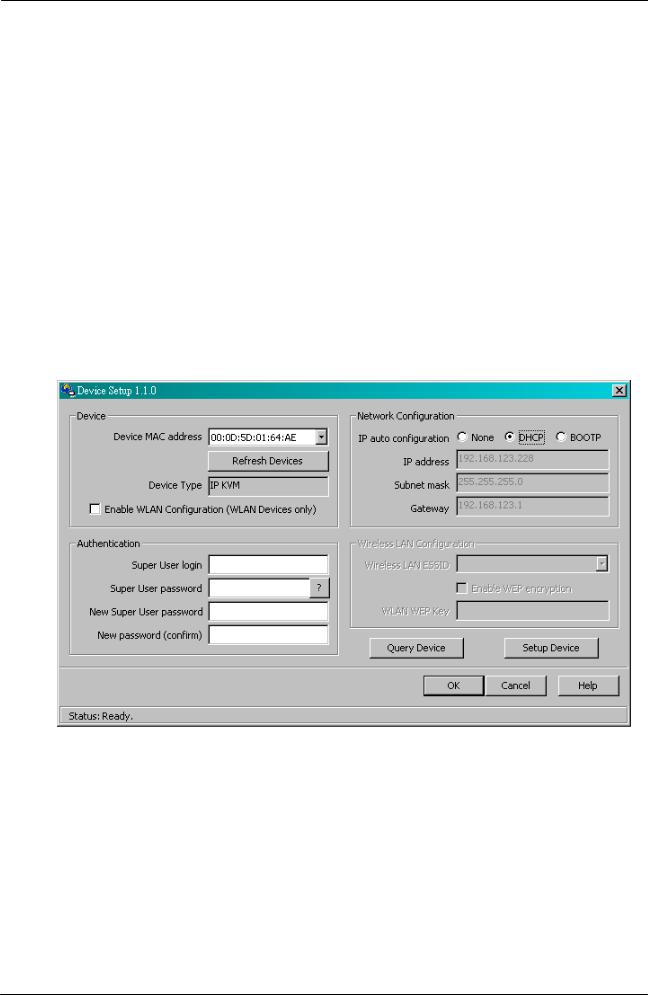
DKVM-IP8 User Manual
DKVM-IP8 Setup Tool
If this initial configuration does not meet your local requirements, usethe setup tool to change the configurations to your needs. The setup toolPSetup can be found on the
CD ROM delivered with this package. You can follow the procedures described below.
■DHCP
If you have installed the DKVM-IP8 unit on a network that enables DHCP, you can use the PSetup to find out the DKVM-IP8 unit’s IP.
(1)Plug Ethernet cable to DKVM-IP8 unit. DKVM-IP8 will get an IP via DHCP.
(2)Using PSetup (run PSetup.exe) to look for DKVM-IP8.
a.Select MAC address which label on bottom of DKVM-IP8 unit
b.Click Query Device
■Setup the fixed IP
a.Setup “IP auto configuration” as “None” ; setup IP address and Subnet mask
b.Enter Super user login and password for Authentication (default : super/pass)
c.Click Setup Device. If super login was authenticated, it’ll show “Successfully configured device”. Otherwise it’ll show “Permission Denied”.
8 / 104

DKVM-IP8 User Manual
Install JVM on Client system
The DKVM-IP8 unit can be accessed with a standard JAVA enabled web browser. You must install Java Runtime Environment: version 6 update 5 and above to your client system.
Note: At a minimum you must have IE7.0, IE8.0, Netscape7.0, Mozilla 3.2,
(Firefox 3.6) and above installed on your client computer.
Connect the DKVM-IP8 unit via Web Browser
Using the HTTP protocol or a secure encrypted connection via HTTPSand entering the IP address of the DKVM-IP8 unit into your web browser to connect to the DKVM-IP8 unit.
This will lead you to the DKVM-IP8 login page as shown in figure below.
9 / 104
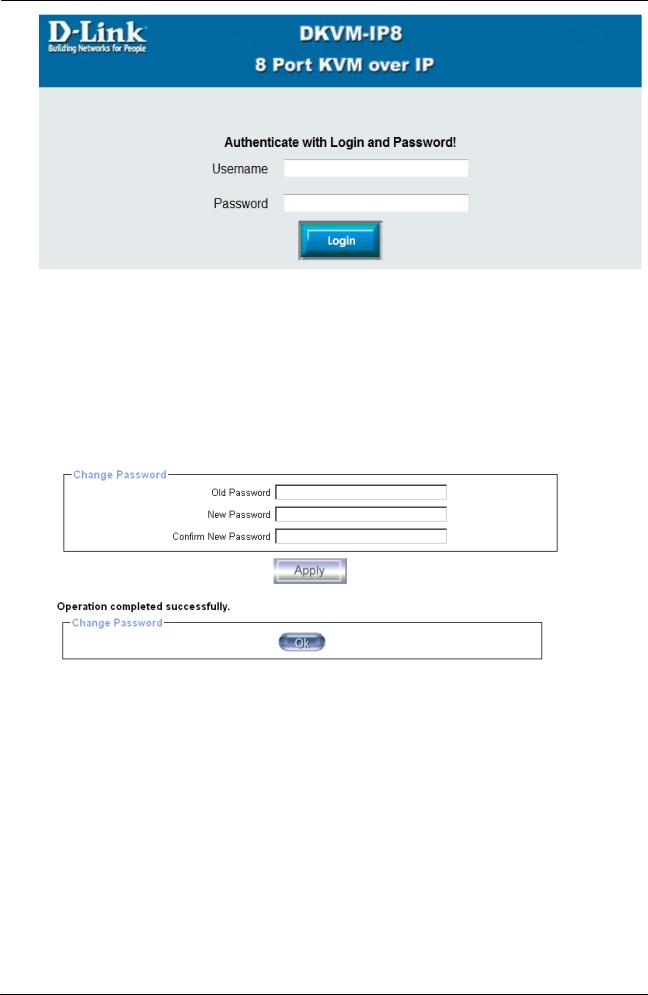
DKVM-IP8 User Manual
The factory default settings are:
Username |
admin |
Password |
admin |
The super user has all permissions to administrate your DKVM-IP8:
After login, the system will prompt for changing the default username and password to user specific settings.
Control servers via Remote Console
The Remote Console is the redirected screen, keyboard and mouse of the remote host system. The Remote Console will behave exactly the same way as if you were sitting directly in front of the screen of your remote system. That means that bothe keyboard
and mouse can be used in the usual way. Open the consoleselectingby the preview picture on the main site of the HTML front end. Figure 1-shows2 the top of the Remote Console.
10 / 104

DKVM-IP8 User Manual
Figure 1-2. Top part of the Remote Console
There are some options to choose from, and the important ones are the following:
Auto Adjust button
If the video displayed is of bad quality or distorted in some way, press this button and wait a few seconds whileDKVM-IP8 unit tries to adjust itself for the best possible video quality.
Sync Mouse 
Choose this option in order to synchronize the local with the remote mouse cursor.
This is especially necessary when using accelerated mouse settings on the host system. In general there is no need to change mouse settings on the host.
Video Settings in Options Menu
This opens a new window with elements to control DKVMthe-IP8 unit’s Video Settings. You can change some values, for instancethe brightness and contrast of
the picture displayed, which may improve the video quality. It is also possible to revert to the default settings for all video modes or only the current one.
Note: At first start, if the local mouse pointer is not synchronized with the remote mouse pointer, press the Auto Adjust Button once.
11 / 104

DKVM-IP8 User Manual
2. Introduction
The KVM over IP technology (DKVM-IP8) combines digital remote KVM access via IP networks with comprehensive and integrated system management. The DKVM-IP8 defines a new class of remote KVM access devices that can save your money, time, space, and equipment.
The DKVM-IP8 provides convenient, remote KVM access and control via LAN or Internet. It captures, digitizes, and compresses video signal and transmits it with keyboard and mouse signals to and from a remote computer. DKVM-IP8 provides a non-intrusive solution for remote access and control. Remote access and control software runs on its embedded processors only but not on mission-critical servers, so that there is no interference with server operation or impact on network performance.
The DKVM-IP8 supports console of USB style keyboard, mouse, and HDDB15 video interfaces. The DKVM-IP8 will automatically detect the current video mode of the console, however manual fine-tuning is recommended to receive the best video quality.
2.1 Feature overview
♦Manage servers around the world.
♦KVM (keyboard, video, and mouse) access over IP and analogous telephone line
(modem needed)
♦Full control under any OS, in BIOS mode, during boot, at Blue Screens
♦No additional software necessary on servers
♦Can be used with most standard KVM
♦256 bit SSL encryption of all transmitted data and Certificate management
♦Automatically senses video resolution for best possible screen capture
♦Serial over LAN, Remote serial power control via web
♦Video Resolution up to: Local console 1920 x 1440
Remote console 1600 x 1200, High-color depth 16 bits
♦High-performance mouse tracking and synchronization
♦Automatic adjustment of data rate to transmission line
♦Drive redirection function on the remote console control bar, Remote mass storage control.
♦Can be controlled over all java-enabled Browsers
♦Firmware update via web interface
♦Port to connect a user console for direct analogous access to KVM switch
12 / 104

DKVM-IP8 User Manual
2.2 Technical specifications
Function |
Specification |
|
KVM |
|
|
VGA Resolution |
Local : 1920 x 1440 |
|
|
Remote : 1600 x 1200 |
|
Daisy Chain |
Connector DB15 (Female Type) |
|
|
Support daisy chaining up to 8 layers |
|
|
|
|
Flash port |
DC2.5F |
|
Computer selection |
On Screen Display (OSD) Menu, Hotkey, Push Button |
|
hotkey |
Provide various Hotkey (Scroll-Lock/ Caps-Lock/ Num-Lock/ Alt/ |
|
|
Ctrl/ Win) |
|
Computer Port LEDs |
2 color LED for each host port: ON LINE (Yellow), SATATION |
|
|
(Red) |
|
Power LED |
Indicating the KVM Switch is power on. |
|
Reset |
Press the “5” and “0” button simultaneously will restart the |
|
|
firmware of the KVM switch. |
|
Security |
Provide ACL (Access Control List) security function, store up to 8 |
|
|
independent ACL’s of controllable computer lists |
|
Multilingual OSD |
8 languages (English, France, Germen, Spanish, Italian, |
|
(On Screen Display) |
Russian, Japanese, Simplified Chinese) |
|
Auto-Scan Intervals |
5 ~ 99 Sec. |
|
|
|
|
IP |
|
|
OS supported |
Windows, Unix, Unix-like OS(Sun Solaris, Linux). Mac OSX |
|
|
|
|
Browser supported |
Microsoft Internet Explorer version 6.0 or above, or |
|
|
Netscape or Mozilla or Safari |
|
Security |
IP filter |
|
|
|
|
Authentication |
Local, LDAP, RADIUS |
|
|
|
|
Network Connection |
10/100 Ethernet |
|
|
Telephone line (modem needed) |
|
Management Interface |
Web , Utility, Telnet |
|
Event log |
NFS, SMTP, SNMP trap |
|
|
|
|
Others |
|
|
Housing Material |
Metal |
|
DC Power Adapter |
12V 1A |
|
Operation Temperature |
0 ~ 50 °C |
|
Storage Temperature |
-20 ~ 60 °C |
|
Humidity |
0~80%, Non-Condensing |
|
Mechanical |
Rack mount, 1U |
|
Dimension (mm) |
444.5 x 190 x 44 |
13 / 104

|
|
DKVM-IP8 User Manual |
|
|
|
|
|
2.3 System requirement |
|||
|
Hardware |
|
|
|
Item |
Description |
|
|
Local host side |
One PC or server or the console port of KVM switch unit |
|
|
|
|
|
|
Remote Console side |
Multiple PCs are linked into the network |
|
|
|
|
|
|
Software |
|
|
|
Item |
Description |
|
|
Local host side |
No additional software necessary |
|
|
|
|
|
|
Remote Console side |
(1) Java Runtime Environment : version 6 update 5 and above. |
|
|
|
Linux JDK 1_5_0_18 and above |
|
|
|
(2) Browser: ( IE7.0 , IE8.0, Netscape7.0, Mozilla 3.2, |
|
|
|
Firefox 3.6) and above. |
|
2.4 When the server is up and running
The DKVM-IP8 gives you a full control over the remote server. The Management Console allows you to access the remote server’s graphics, keyboard and mouse and to send special commands to the server. You can also perform periodic maintenance of the server. Using the Console Redirection Service, you are able to do the following:
I.Reboot the system
II.Watch the boot process.
III. Boot the system from a separate partition to load the diagnostic environment. IV. Run special diagnostic programs.
2.5 When the server is dead
Obviously, fixing hardware defects is not possible through a remote management device. Nevertheless DKVM-IP8 gives the administrator valuable information about the type of a hardware failure. Serious hardware failures can be categorized into five different categories with different chances to happen:
I.Hard disk failure 50%
II.Power cable detached, power supply failure 28%
III. CPU, Controller, main board failure 10%
IV. CPU fan failure 8%
V.RAM failure 4%
14 / 104

DKVM-IP8 User Manual
Using DKVM-IP8, administrators can determine which kind of serious hardware failure has occurred (See table 2-1).
Type of failure |
Detected by |
Hard disk failure |
Console screen, CMOS set-up information |
Power cable detached, power supply |
Server remains in power off state after power |
failure |
on command has been given. |
CPU Controller, main board failure. |
Power supply is on, but there is no video |
|
output. |
CPU fan failure |
By server specific management software |
RAM failure |
Boot-Sequence on boot console |
Table 2-1. Host system failures and how they are detected.
15 / 104
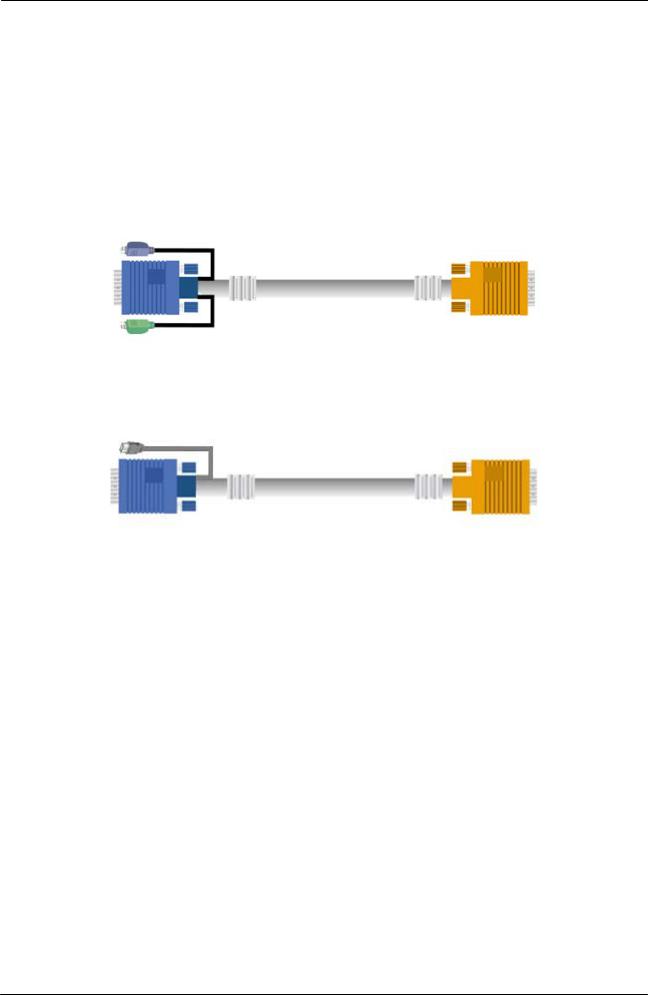
DKVM-IP8 User Manual
3. Hardware installation
3.1 Installation
You must have a 3-in-1 VGA cable for connecting KVM Switch to PS/2 computers, or a 2-in-1 VGA cable for connecting KVM Switch to USB computers.
The 3-in-1 VGA cable is a combo cable with one HDDB15 male connector at one end and three connectors at the other.
The 2-in-1 VGA cable is a combo cable with one HDDB15 male connector at one end and two connectors at the other.
Please perform the following steps:
1.(Optional) Connect the type A connector of USB A-Mini usb cable to the host computer, while using remote mass storage control.
2.Connect Ethernet to LAN port and/or modem to serial port, depending on how you want to access DKVM-IP8 switch
3.Power down your computer and DKVM-IP8 switch
4.Connect the power supply to DKVM-IP8 switch
5.Connect the monitor to the DKVM-IP8 switch console side.
6.Connect the keyboard to the DKVM-IP8 switch console side.
7.Connect the mouse to the DKVM-IP8 switch console side.
8.Connect a VGA cable (15-pin HDDB Male / Male) with the Male side to both of the host computer/KVM and the host port of the DKVM-IP8 switch.
9.Connect one purple end of 3-in-1 cable to the PS/2 mouse port on the host computer/KVM, and the other end of 3-in-1 cable to the host PS/2 mouse port on the
DKVM-IP8 Switch.
10.Connect one green end of 3-in-1 cable to PS/2 keyboard port on the host computer/KVM, and the other end of 3-in-1 cable to the host PS/2 keyboard port on the DKVM-IP8 switch.
11.(Optional) Connect the type A connector of USB A-mini usb cable to the host computer,
16 / 104

DKVM-IP8 User Manual
while using remote mass storage control.
12.Connect Ethernet to LAN port and/or modem to serial port, depending on how you want to access DKVM-IP8 switch
13.Power on the computer.
3.2 Operations
You can control the KVM Switch by three methods:
1.Using push buttons located on the front panel of the KVM Switch
2.Using the OSD (On-Screen Display)
3.Using hotkey commands through the console keyboard
It takes approximately 1-2 seconds for the video signal to refresh after switching servers and re-synchronization of the mouse and keyboard signals. This is normal operation and ensures that proper synchronization is performed at the console and the connected servers.
When you power on KVM Switch, if the security function is enabled (default is disabled), it will prompt a Login window waiting for you to enter the user name and password. You need to pass the authentication to control the KVM Switch.
17 / 104

DKVM-IP8 User Manual
3.3 Hotkey Commands
You can conveniently command KVM Switch via a simple hotkey sequence. To send commands to KVM Switch, you must press the hotkey (default is Caps Lock) twice within 2 seconds. You will hear a beep sound confirming you are in the hotkey mode. If you do not press any key during hotkey mode over 2 seconds the hotkey mode will be terminated and back to normal state.
The default hotkey is Caps Lock but you can change hotkey as your application convenience. If you prefer to use other hotkey, please go to OSD menu and change the default hotkey to the other.
The table blow lists all the supported hotkey commands.
Command |
Function |
|
Space Bar |
Bring up the OSD screen |
|
or |
Move selection up or down |
|
1~8 Bank |
The first digit is bank number starting with “1”. The first KVM Switch |
|
01~08Port |
on the daisy chain line is bank 1 (the Master). A standalone KVM |
|
|
Switch is fixed in bank 1. The second and the third digits indicate the |
|
|
port number from 01 to 08. |
|
|
|
|
PgUp |
Back to previous bank. |
|
PgDn |
Go to next bank. |
|
B |
To enable/disable beep sound function. |
|
L |
To enable/disable the Screen Saving function and 10min |
|
auto-logout function. This default function is OFF. |
||
|
||
|
To login to the OSD. If Security is enabled it will display the Login |
|
P |
window waiting for username and password. If Security is disabled it |
|
|
will display the Status window. |
|
|
|
|
R |
For supervisor to reset the OSD back to factory default value |
|
(except User Security settings). |
||
|
||
|
|
|
S |
For supervisor to activate the Auto-scan function. |
|
|
For supervisor to enable/disable Security function. If the Security is |
|
U |
off, you can access the KVM system without user name & password. |
|
|
This default function is OFF. |
18 / 104

DKVM-IP8 User Manual
3.4 OSD Operations
You can either activate the OSD window by press hotkey or by mouse.
♦By pressing hotkey: Press hotkey twice then press Space bar.
♦By mouse: Press and hold the left button of the mouse and hit the Esc key to show the
Status screen. Press and hold the right button of the mouse and hit the Esc key to bring up the Main Menu.
OSD Menu provides a menu-driven interface to control the KVM Switch. It has four types of display screens:
1Login Window: When powering on this KVM Switch, if the security function is enable, it will prompt a login window and ask for user name and password. This KVM system
can setup one SUPERVISOR and eight USERs. SUPERVISOR can access to all OSD functions. USER can access to PORT NAME and PORT SEARCH only.
2Status screen: after the log in the Status screen will show up to display the current port selection, port name, Hotkey type, and Screen Saving status.
3Port Name: this menu displays port status, and allows us to switch bank/port. The Help message is shown on the right pane of the OSD window.
4Main Menu: there are eight sub-menus to operate. They are listed as below:
Item |
Main Menu |
Function |
01 |
LANGUAGE |
Select OSD language |
02 |
PORT NAME EDIT |
Edit port name |
03 |
PORT SEARCH |
Quick searching by port name |
04 |
USER SECURITY |
Set username and password |
05 |
ACCESS LIST |
Define user access authority |
06 |
HOTKEY |
Select Hotkey |
07 |
TIME SETTINGS |
Set auto-scan time interval |
08 |
OSD MOUSE |
Modify OSD mouse speed |
19 / 104

DKVM-IP8 User Manual
Example 1:
To bring up the OSD by hotkey, press “Caps Lock”, “Caps Lock” and the “Space Bar”. Immediately, the OSD overlay screen will appear. The superimposed menu screen is generated by the KVM Switch, and does not affect your computers or software function in any way.
Caps |
+ |
Lock |
Caps |
+ |
Space Bar |
= On Screen Display Menu |
|
Lock |
||||
|
Example 2:
To switch to Bank 1 Port1, press “Caps Lock”, “Caps Lock”, and “1”, “0”, “1”.
Caps |
+ |
Lock |
Caps |
+ |
1 |
+ |
0 |
+ |
1 = Switch to Bank 1’s Port 1 |
Lock |
Note. Every key needs to press within 2 seconds.
20 / 104

DKVM-IP8 User Manual
3.4.1 Login Windows
Power on the local console monitor and power on the KVM Switch by plug in the power adapter. If the Security function is enabled (default is disabled), the Login window will show up waiting for user name and password.
U |
S |
E |
R |
|
N |
A |
M E |
P |
A |
S |
S |
W |
O |
R |
D |
The default is SUPERVISOR and default user name is eight zeros “00000000”. The default password is eight zeros “00000000”.
There are case-insensitive, while OSD display fixed in upper case.
After login or port switch by panel button, OSD or Hotkey, the Status screen will show up to display the information of current settings -- one digit Bank No., two-digit Port No., Port
Name and current Hotkey settings. Pressing any key or clicking mouse button will let the Status screen disappeared.
The selected BANK No. |
|
|
The selected Port No. |
|
|
|
|
The name of the Port |
|||||||||||||||
|
|
|
|
|
|
|
|
|
|
|
|
|
|
|
|
|
|
|
|
|
|
|
|
|
|
|
|
|
|
|
|
|
|
|
|
|
|
|
|
|
|
|
|
|
|
|
|
|
|
|
|
|
|
|
|
|
|
|
|
|
|
|
|
|
|
|
|
|
|
|
|
|
1 |
|
0 |
|
1 |
|
|
|
S Y |
S |
T |
E M |
0 1 |
|
|
||||||||
|
|
|
|
|
|
|
|
|
|
|
|
|
|
|
|
|
|
|
|
|
|
|
|
|
|
C |
|
a |
p |
|
s |
L |
o |
c |
k |
|
|
|
|
|
|
|
|||||
|
|
|
|
|
|
|
|
|
|
|
|
|
|
|
|
|
|
|
|
|
|
|
|
|
|
|
|
The selected Hotkey |
|
|
Screen Saving enabled |
|
|||||||||||||||
|
|
|
|
|
|
|
|
|
|
|
|
|
|
|
|
|
|
|
|
|
|
|
|
Screen Saving Function
♦The Screen Saving function can be enabled/disabled with the hotkey “L” and default setting is OFF (disable).
♦When the Screen Saving function is enabled, if no input from the console keyboard or mouse over 10 minutes, the KVM Switch will turn off the screen display and auto-logout and show up Login window asking for user name and password (if the security function is disabled). One more minute of keyboard/mouse inactivity, the monitor will be turned off (the monitor Power LED turns from green to orange).
♦When the Screen Saving function is disabled, it will disable the 10min auto-logout function as well.
Note: When Screen Saving enabled, the Login window will disappear if idle for more then 1 minute. You Hit any key to bring up the Login window again.
21 / 104
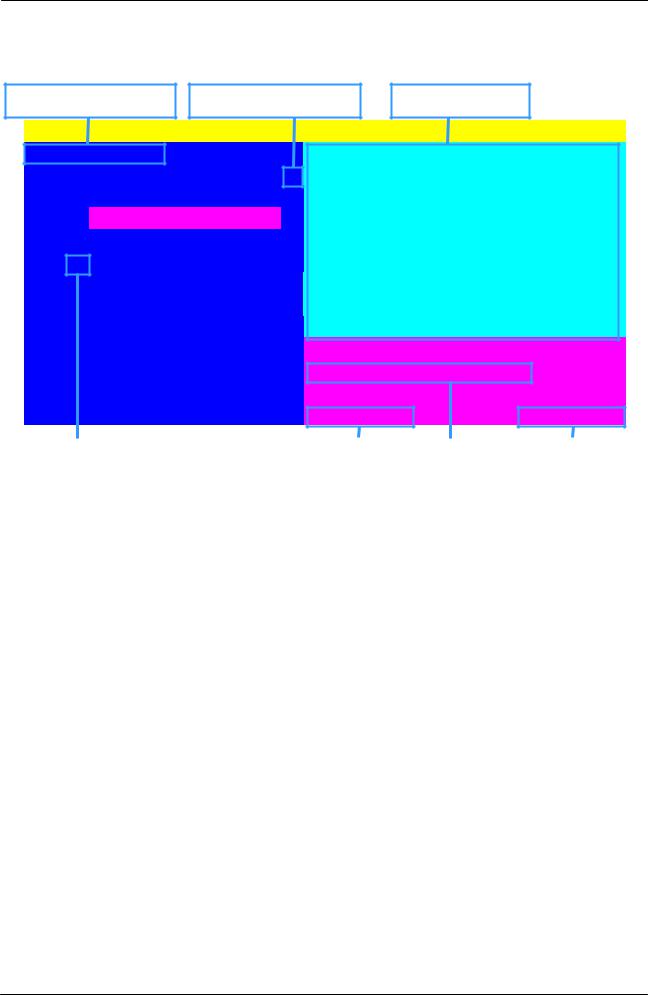
DKVM-IP8 User Manual
3.4.2 Port Name
The first page shows the current port name, the selected port and the operation hint.
The selected BANK |
The selected port |
|
|
|
|
Operation Hint |
|
|
||||||||
P O R T |
N A M E |
|
|
|
|
|
|
|
|
|
|
|
|
|||
B |
A N K : |
1 |
|
|
F |
1 |
: |
M E |
N U |
|
|
|
||||
0 |
1 |
S Y S T E M 0 1 F |
2 |
: |
L |
O G O U T |
|
|
||||||||
0 |
2 |
S Y S T E M |
0 2 |
F |
3 |
: |
P |
R E V |
|
|
|
|||||
0 |
3 |
S Y S T E M |
0 3 |
E |
S C : |
Q U I |
T |
|
|
|||||||
0 |
4 |
S Y S T E M 0 4 |
E N T |
E R : C O M P L E T E |
||||||||||||
0 |
5 |
S Y S T E M |
0 5 |
/ |
|
: |
S E L E C T |
|
|
|||||||
0 |
6 |
S Y S T E M |
0 6 |
|
|
|
|
|
|
|
|
|
|
|
||
0 |
7 |
S Y S T E M |
0 7 |
P |
g |
|
U p / P g D n : |
|
|
|||||||
0 |
8 |
S Y S T E M 0 8 |
B A N K |
|
S E L E C T |
|
|
|||||||||
|
|
|
|
|
|
U |
S |
|
E |
R |
: |
|
|
|
|
|
|
|
|
|
|
|
S |
U |
P |
E |
R V |
I |
S O R |
|
|
||
|
|
|
|
|
|
S |
C |
A |
N |
|
T |
I |
M E : |
|
|
|
|
|
|
|
|
|
1 |
0 |
|
S |
E |
C |
|
|
F |
W 1 |
V 3 |
Indicating this port is connecting to a |
|
Auto-scan |
|
User |
|
Firmware |
|
||
power on computer. |
|
|
interval |
|
Level |
|
Version |
|
|
|
|
|
|
|
|
|
|
|
|
|
|
|
|
|
|
|
|
|
|
|
OSD Function Key |
|
|
Description |
|
|
|
||
|
F1 |
Go to the main menu |
|
|
|
|
|
||
|
|
To login to the OSD. If Security is enabled it will display the |
|||||||
|
F2 |
Login window waiting for entering username and |
|||||||
|
password. If Security is disabled it will display the Status |
||||||||
|
|
||||||||
|
|
window. |
|
|
|
|
|
|
|
|
F3 |
Go to previous menu |
|
|
|
|
|
||
|
Enter |
Switch to the selected port |
|
|
|
|
|
||
|
or |
Move up or down |
|
|
|
|
|
||
|
PgUp |
Go to previous bank |
|
|
|
|
|
||
|
PgDn |
Go to next bank |
|
|
|
|
|
||
|
Esc |
Exit |
|
|
|
|
|
|
|
|
1 |
Show port 1 ~ 8 |
|
|
|
|
|
||
22 / 104

DKVM-IP8 User Manual
♦USER: There are two types of user levels: SUPERVISOR (default) and USER.
SUPERVISOR can configure and change the OSD settings at main menu. USER can only do the port switch and port search.
♦SCAN TIME: This is the time interval for auto-scan function. When auto-scan function is activated, KVM Switch will auto-scan the host port one by one according to the interval setting. Note that the port without connecting to a computer/server will be skipped when scanning.
♦The numeric keypad is not supported, while in OSD screen, the arrow keys, PgUp, PgDn and Enter keys are supported.
3.4.3 Main Menu
There are eight sub-menus under main menu for you to select.
M |
A I |
N |
|
M |
E |
N |
U |
|
|
|
|
|
|
|
|
S |
E L |
E |
C |
T |
|
O |
P |
T |
I |
O |
N |
: |
|
|
|
0 |
1 |
L |
A |
N |
G |
U |
A |
G |
E |
|
|
|
|
|
|
0 |
2 |
P |
O |
R |
T |
|
N |
A |
M |
E |
|
E |
D |
I |
T |
0 |
3 |
P |
O |
R |
T |
|
S |
E |
A |
R |
C |
H |
|
|
|
0 |
4 |
U |
S |
E |
R |
|
S |
E |
C |
U |
R |
I |
T |
Y |
|
0 |
5 |
A |
C |
C |
E |
S |
S |
|
L |
I |
S |
T |
|
|
|
0 |
6 |
H |
O |
T |
K |
E |
Y |
|
|
|
|
|
|
|
|
0 |
7 |
T |
I |
M |
E |
|
S |
E |
T |
T |
I |
N |
G |
S |
|
0 |
8 |
O |
S |
D |
|
M |
O |
U |
S |
E |
|
|
|
|
|
3.4.4 Language
The OSD supports eight languages: English, French, German, Italian, Spanish, Simplified Chinese, Japanese and Russian.
The default language is ENGLISH. Moving the cursor by keyboard (Up Arrow key “”or the Down Arrow key “”) or mouse to select the language you need, and then press Enter key to activate.
L |
A |
N G |
U |
A |
G |
E |
|
|
|
|
|
|
|
|
|
|
|
|
C |
H O O |
S |
E |
|
A |
|
L A N G U A G E : |
|||||||||||
0 |
1 |
E |
N |
G |
L |
I |
S |
H |
|
|
|
|
|
|
|
|||
0 |
2 |
F |
R |
A |
N |
C |
H |
|
|
|
|
|
|
|
|
|
|
|
0 |
3 |
G |
E |
R |
M |
A |
N |
|
|
|
|
|
|
|
|
|
|
|
0 |
4 |
I |
T |
A |
L |
I |
A |
N |
|
|
|
|
|
|
|
|
|
|
0 |
5 |
S |
P |
A |
N |
I |
S |
H |
|
|
|
|
|
|
|
|
|
|
0 |
6 |
S |
I |
M |
P |
L |
I |
F |
I |
E |
D |
C |
H |
I |
N |
E |
S |
E |
0 |
7 |
J |
A |
P |
A |
N |
E |
S |
E |
|
|
|
|
|
|
|
|
|
0 |
8 |
R |
U |
S |
S |
I |
A |
N |
|
|
|
|
|
|
|
|
|
|
23 / 104

DKVM-IP8 User Manual
Note: The non-English languages on OSD are mainly for display, rather than editing. For editing, no matter what language you select, OSD menu supports
English alphanumeric characters only. That means you can not edit the menu in Japanese or Chinese.
3.4.5 Port Name Edit
You can edit the name for the selected port. |
|
|
|||||||||
|
|
|
|
|
|
|
|
|
|
|
|
|
P |
O |
R T |
|
N A M |
E |
E |
D I T |
|||
|
B |
A |
N |
K |
1 |
: |
|
|
|
|
|
|
0 |
1 |
|
S |
Y |
S |
T |
E |
M |
0 |
1 |
|
0 |
2 |
|
S |
Y |
S |
T |
E |
M |
0 |
2 |
|
0 |
3 |
|
S |
Y |
S |
T |
E |
M |
0 |
3 |
|
0 |
4 |
|
S |
Y |
S |
T |
E |
M |
0 |
4 |
|
0 |
5 |
|
S |
Y |
S |
T |
E |
M |
0 |
5 |
|
0 |
6 |
|
S |
Y |
S |
T |
E |
M |
0 |
6 |
|
0 |
7 |
|
S |
Y |
S |
T |
E |
M |
0 |
7 |
|
0 |
8 |
|
S |
Y |
S |
T |
E |
M |
0 |
8 |
The first line bar is Bank number, following rows are port name list.
Use keyboard (Up Arrow key “”, Down Arrow key “”) or mouse to select the port you want to edit. After select the port, you can either press the Enter Key, or move the cursor to port name and click left button of mouse to switch the port immediately. Press PgUp key or PgDn key for selecting the previous or next Bank.
Press Enter key to start editing. You can press Esc key to cancel the editing without any change or press Enter key to save the modification.
3.4.6 Port Search
You can search a computer by the port name. Enter “*” and then press Enter key will show all the port names.
P |
O |
R |
T |
S E |
A |
R |
C |
H |
|
E |
N |
T |
E |
R |
N |
A |
M |
E |
: |
|
|
|
|
|
|
|
|
|
|
|
|
|
|
|
|
|
|
|
|
24 / 104
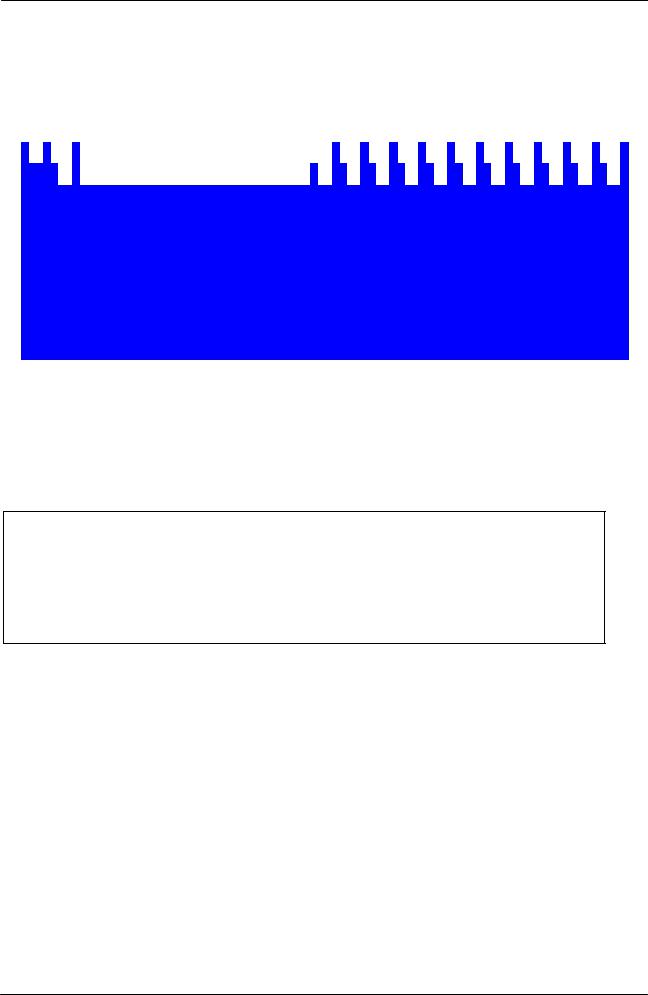
DKVM-IP8 User Manual
3.4.7 User Security
There are two levels of user security: SUPERVISOR and USER. You can configure one
SUPERVISOR and maximum eight USERs for the security.
U S E |
R |
|
S |
E |
C |
U |
R I T Y |
|
|
|
|
|
|
|
|
|
|
|
|
|
|
|
|
|
||||||||
|
|
|
N |
A |
M |
E |
|
|
|
|
|
|
|
|
|
|
P |
|
A |
|
S |
|
S |
|
W |
O |
|
R |
|
D |
||
S |
|
|
0 |
0 |
0 |
0 |
0 |
0 |
0 |
0 |
|
|
|
|
|
|
0 |
|
0 |
|
0 |
|
0 |
|
0 |
|
0 |
|
0 |
|
0 |
|
1
2
3
4
5
6
7
8
Press the Enter key or left button of mouse for editing. The left-top “S” indicates SUPERVISOR, and the number 1 ~ 8 indicate USERs. The maximum length of NAME and PASSWORD is eight characters (A~Z and 0~9).
Press Enter key to start editing. You can press Esc key to cancel the editing without any change or press Enter key to save the modification.
Hint:
♦Blank has an underscore while SPACE doesn't have.
♦Press any alphanumeric key can move to the next input item. SPACE is treated as a valid character.
♦At default, all USER's username = SPACE and password = SPACE, but they are invisible, so anyone can use SPACE to login to the OSD window.
25 / 104
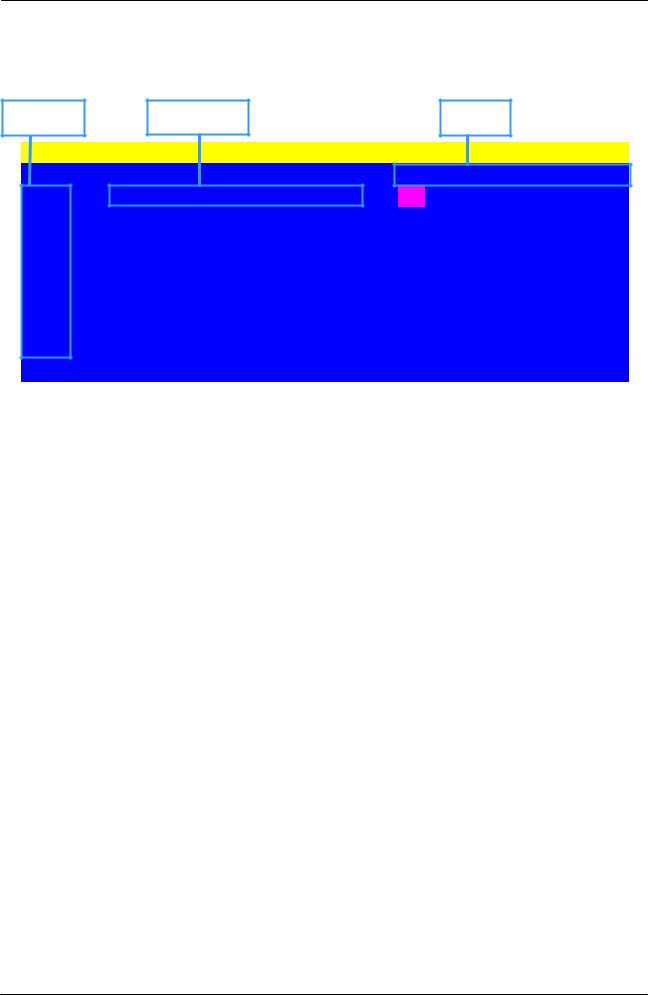
DKVM-IP8 User Manual
3.4.8 Access List
You can configure the access rights of each user.
Port No. |
|
Port Name |
|
|
|
|
|
Users |
|
|
|
|
|||
A |
C C E S |
S |
L |
I S T |
|
|
|
|
|
|
|
X |
|||
B |
A N K : |
1 |
|
|
|
|
1 |
2 |
3 |
4 |
5 |
6 |
7 |
8 |
|
0 |
1 |
S Y |
S T E |
M |
0 |
1 |
O |
O |
O |
O |
O |
O |
O |
O |
|
0 |
2 |
S Y |
S T E |
M |
0 |
2 |
O |
O |
O |
O |
O |
O |
O |
O |
|
0 |
3 |
S Y |
S T E |
M |
0 |
3 |
O |
O |
O |
O |
O |
O |
O |
O |
|
0 |
4 |
S Y |
S T E |
M |
0 |
4 |
O |
O |
O |
O |
O |
O |
O |
O |
|
0 |
5 |
S Y |
S T E |
M |
0 |
5 |
O |
O |
O |
O |
O |
O |
O |
O |
|
0 |
6 |
S Y |
S T E |
M |
0 |
6 |
O |
O |
O |
O |
O |
O |
O |
O |
|
0 |
7 |
S Y |
S T E |
M |
0 |
7 |
O |
O |
O |
O |
O |
O |
O |
O |
|
0 |
8 |
S Y |
S T E |
M |
0 |
8 |
O |
O |
O |
O |
O |
O |
O |
O |
|
Only SUPERVISOR can configure the ACCESS LIST. The first block (the first two digits) indicate the port number. The second block is the server/computer name list. The third block (the last eight digits) is the access right of each user. Use the Enter key or left button of mouse to active/deactivate the access right of each port. “X” indicates the access is restricted and “O” indicates the access is permitted.
3.4.9 Hotkey
You can select the conventional key to be the hotkey.
H |
O |
T |
K |
E |
Y |
|
|
|
|
|
|
|
|
S |
E |
L |
E |
C |
T |
|
H O |
T |
K |
E |
Y |
: |
|
S |
c |
r |
o |
l |
l |
|
L |
o |
c |
k |
|
|
|
N |
u |
m |
b |
e |
r |
|
L |
o |
c |
k |
|
|
|
C |
a |
p |
s |
|
L |
o |
c |
k |
|
|
|
|
|
L |
e |
f |
t |
|
C |
t |
r |
l |
|
|
|
|
|
R |
i |
g |
h |
t |
|
C |
t |
r |
l |
|
|
|
|
L |
e |
f |
t |
|
A |
l |
t |
|
|
|
|
|
|
R |
i |
g |
h |
t |
|
A |
l |
t |
|
|
|
|
|
L |
e |
f |
t |
|
W |
i |
N |
|
|
|
|
|
|
R |
i |
g |
h |
t |
|
W |
i |
n |
|
|
|
|
|
Some keyboard may not equip with all the special keys. Make sure the key you select is available in you keyboard.
26 / 104
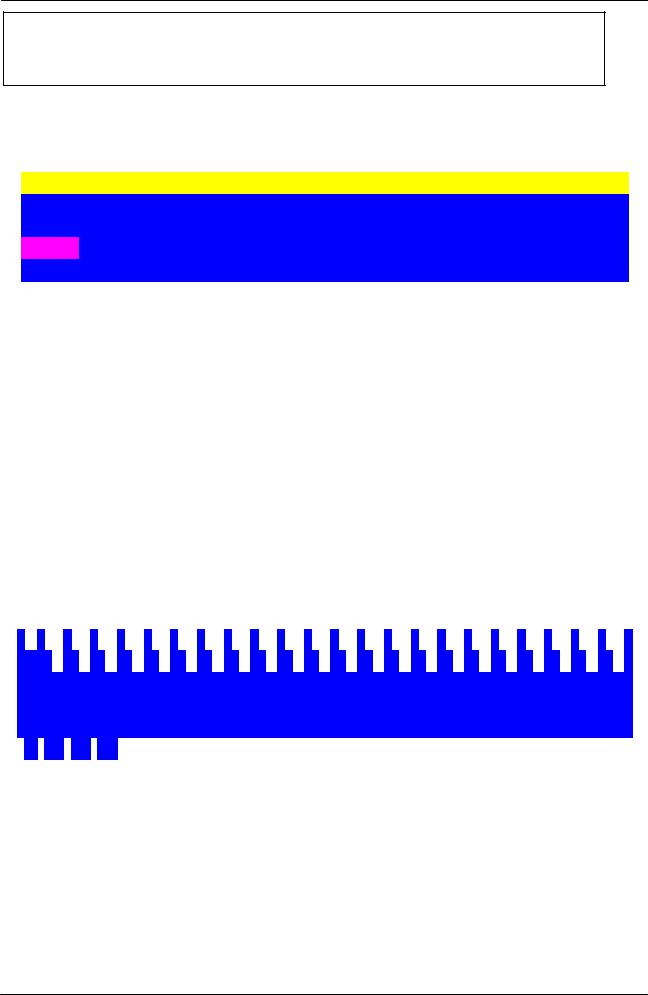
DKVM-IP8 User Manual
Note: If your keyboard does not support the selected hotkey, you can press the right button of mouse and press the Esc key simultaneously to bring up the OSD window.
3.4.10 Time Settings
You can configure the scan interval for auto-scan function.
T |
I M E |
S E T T I |
N H S |
|||||
S |
C |
A |
N |
T |
I |
M E |
: |
|
1 |
0 |
S |
E |
C |
|
|
|
|
When the Auto-Scan function is activated, the KVM Switch will auto-scan the host ports one by one according to the interval setting. Note that the port does not connect to a computer/server will be skipped when scanning. The interval range is from 5 to 99 seconds.
Default interval is 10 seconds.
Press Enter key to start editing. You can press Esc key to cancel the editing without any change or press Enter key to save the modification.
3.4.11 OSD Mouse
You can change the moving speed of mouse cursor in this sub-menu. There are three levels of mouse cursor speed. The fastest moving speed is FAST, the second is MIDDLE and the slowest is SLOW.
Using "" and "" key on keyboard to move highlight bar to the wished speed and the press Enter key to confirm your selection.
O S |
|
D |
|
|
|
M O U |
|
S |
|
E |
|
|
|
|
|
|
|
|
|
|
|
|
|
|
|
|||||||||||||||||||
S |
E L E |
|
C T |
|
A |
|
|
|
P O I N T E R |
|
|
|
S P E E D : |
|||||||||||||||||||||||||||||||
F |
A |
|
S |
|
T |
|
|
|
|
|
|
|
|
|
|
|
|
|
|
|
|
|
|
|
|
|
|
|
|
|
|
|
|
|
|
|
|
|
|
|
|
|
|
|
M I D D L E
 S
S L
L O
O W
W



















27 / 104

DKVM-IP8 User Manual
3.4Firmware Upgrade
Please follow the following procedures:
1.Power on The KVM unit. Use 3-in-1 VGA Cable and PS/2 to USB Changer, The VGA end connect to Port1, another end connect to PC USB port. Then press Hokey + Hokey + F, appears “Beep” sound. At this time, The KVM console will have no response.
2.The KVM now will be into upgade mode, waiting for firmware download.
3.Unplug the KVM mouse and Keyboard, Connect the mouse to the Computer directly, Run “Firmware Upgrade Utility.exe”
3.4.1.Run Firmwar Upgrade Utility
5.Click Find device to Found device, and to select the FW upgrade file. Please make sure you select the correct FW upgrade file .
3.4.2. Find Device
3.4.3. Select Firmware Upgrade firmware File
28 / 104
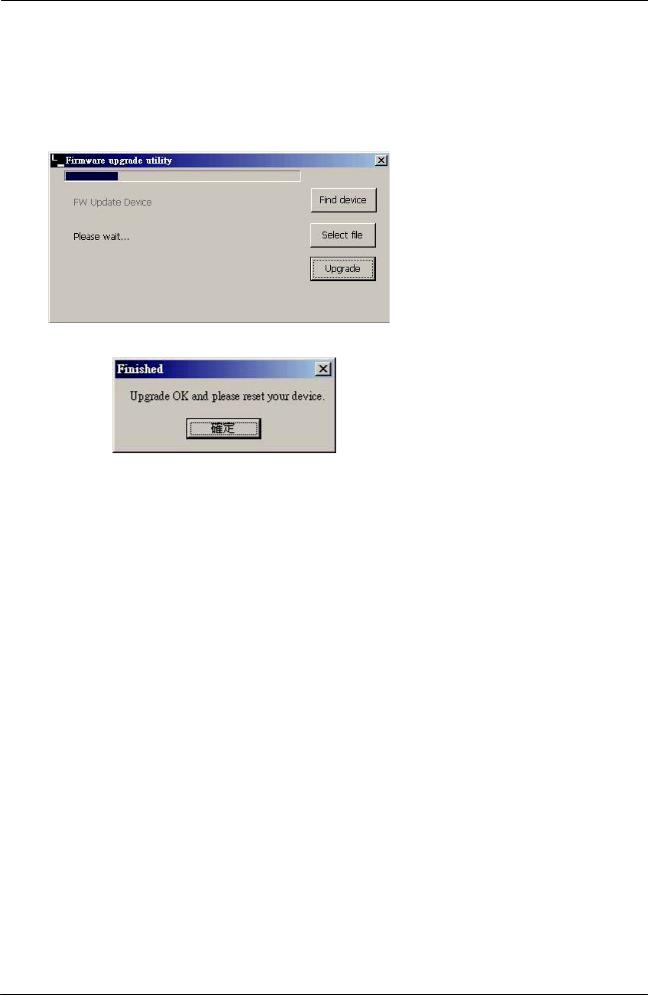
DKVM-IP8 User Manual
6.Click upgade , start to upgrade. The upgrade process takes about 6-10 seconds, then display Upgade OK and please reset your device if complete the upgrade successfully.
3.4.4.Start to Upgrade
3.4.5.Firmware U pgrade finished
7.Now the KVM unit should be running on the new firmware. The FW version can be seen on the bottom-right corner of the OSD window.
29 / 104

DKVM-IP8 User Manual
4. IP module Configuration
4.1 Initial Configuration
If DHCP mode is enabled (IP auto configuration = DHCP), the DKVM-IP8 will try to contact a DHCP server in the subnet to which it is physically connected. If a DHCP server is found, it may provide a valid IP address, gateway address and net mask.
Before you connect the device to your local subnet, be sure to complete the corresponding configuration of your DHCP server. It is recommended to configure a fixed IP assignment to the MAC address of the DKVM-IP8. You can find the MAC address labeled on the bottom side of the metal housing.
If DHCP mode isdisabled (IP auto configuration = None), the factory default IP settings are as below:
IP address |
192.168.0.70 |
|
|
Subnet mask |
255.255.255.0 |
|
|
Default Gateway |
None |
|
|
Table 4-1 Initial Network Configurations
DKVM-IP8 Setup Tool
If this initial configuration does not meet your local requirements, use the setup tool to change the configurations to your needs. The setup tool PSetup can be found on the
CD ROM delivered with this package. You can follow the procedures described below.
■DHCP
If you have installed the DKVM-IP8 on a network that enables DHCP, you can use the PSetup to find out the DKVM-IP8’s IP.
(1)Plug Ethernet cable to DKVM-IP8. DKVM-IP8 will get an IP via DHCP.
(2)Using PSetup (run PSetup.exe) to look for DKVM-IP8.
a.Select MAC address which label on bottom of DKVM-IP8
b.Click Query Device
Notes:
BOOTP, a static configuration protocol, uses a table that maps IP addresses to physical addresses.
DHCP, an extension to BOOTP that dynamically assigns configuration information. DHCP is backward compatible with BOOTP.
30 / 104
